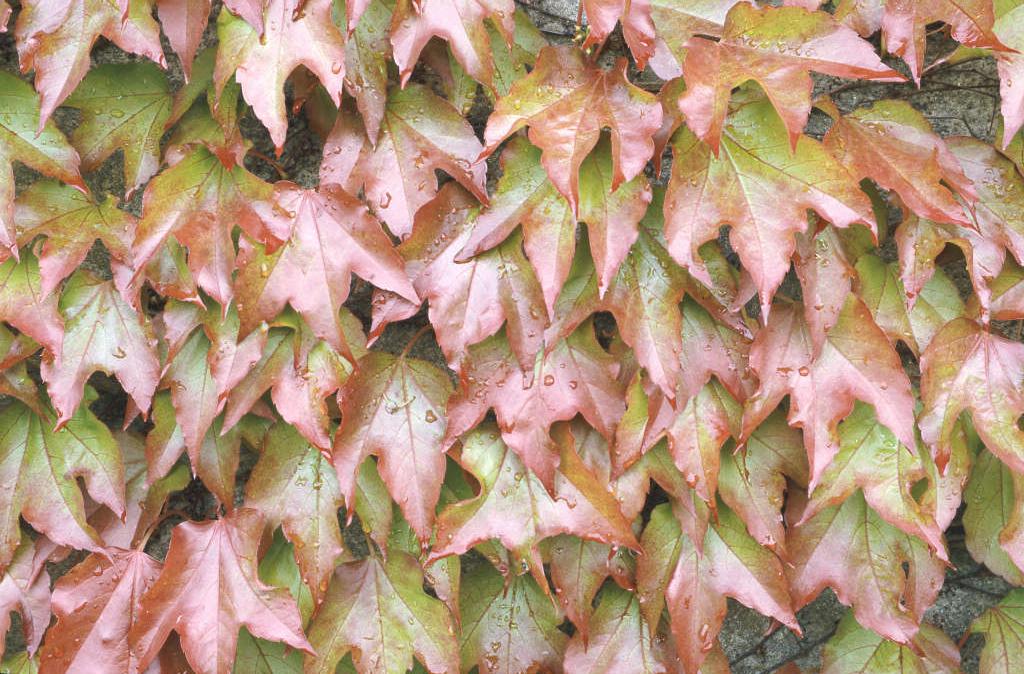Vitis inconstans
Boston ivy
A very vigorous, self-clinging large deciduous climber. Leaves mostly ovate or three-lobed, turning brilliant crimson and purple in autumn. Flowers inconspicuous; berries dull blue
Other common names
Japanese creeperJapanese ivy
Size
Ultimate height
Higher than 12 metresTime to ultimate height
5–10 yearsUltimate spread
Wider than 8 metresGrowing conditions
Moisture
Moist but well–drained, Well–drainedpH
Acid, Alkaline, NeutralColour & scent
| Stem | Flower | Foliage | Fruit | |
| Spring | Green | |||
|---|---|---|---|---|
| Summer | Green | Green | ||
| Autumn | Purple Red | Blue | ||
| Winter |
Position
- Full shade
- Full sun
- Partial shade
Aspect
South–facing or East–facing or North–facing or West–facing
Exposure
Exposed or Sheltered Hardiness
H5Botanical details
- Family
- Vitaceae
- Native to GB / Ireland
- No
- Foliage
- Deciduous
- Habit
- Climbing
- Potentially harmful
- Harmful if eaten, skin irritant. Wear gloves and other protective equipment when handling Pets: Harmful if eaten, skin irritant - see the HTA guide to potentially harmful plants for further information and useful contact numbers
- Genus
Parthenocissus are vigorous deciduous climbers with either tendrils or disk-like suckers, and lobed or palmate leaves which often colour brilliantly in autumn. Inconspicuous green flowers are sometimes followed by attractive blue or black berries
- Name status
Correct
- Plant range
- China, Japan
How to grow
Cultivation
For the best autumn colour, site in partial shade or full shade. It thrives in any fertile, well-drained soil
Propagation
Suggested planting locations and garden types
- Wildlife gardens
- Wall side borders
- Climber and wall shrubs
Pruning
Pruning group 11 in early winter, can also be cut back in summer if need be
Pests
May be susceptible to glasshouse red spider mite and vine weevil
Diseases
May be susceptible to honey fungus
Get involved
The RHS is the UK’s gardening charity, helping people and plants to grow - nurturing a healthier, happier world, one person and one plant at a time.
